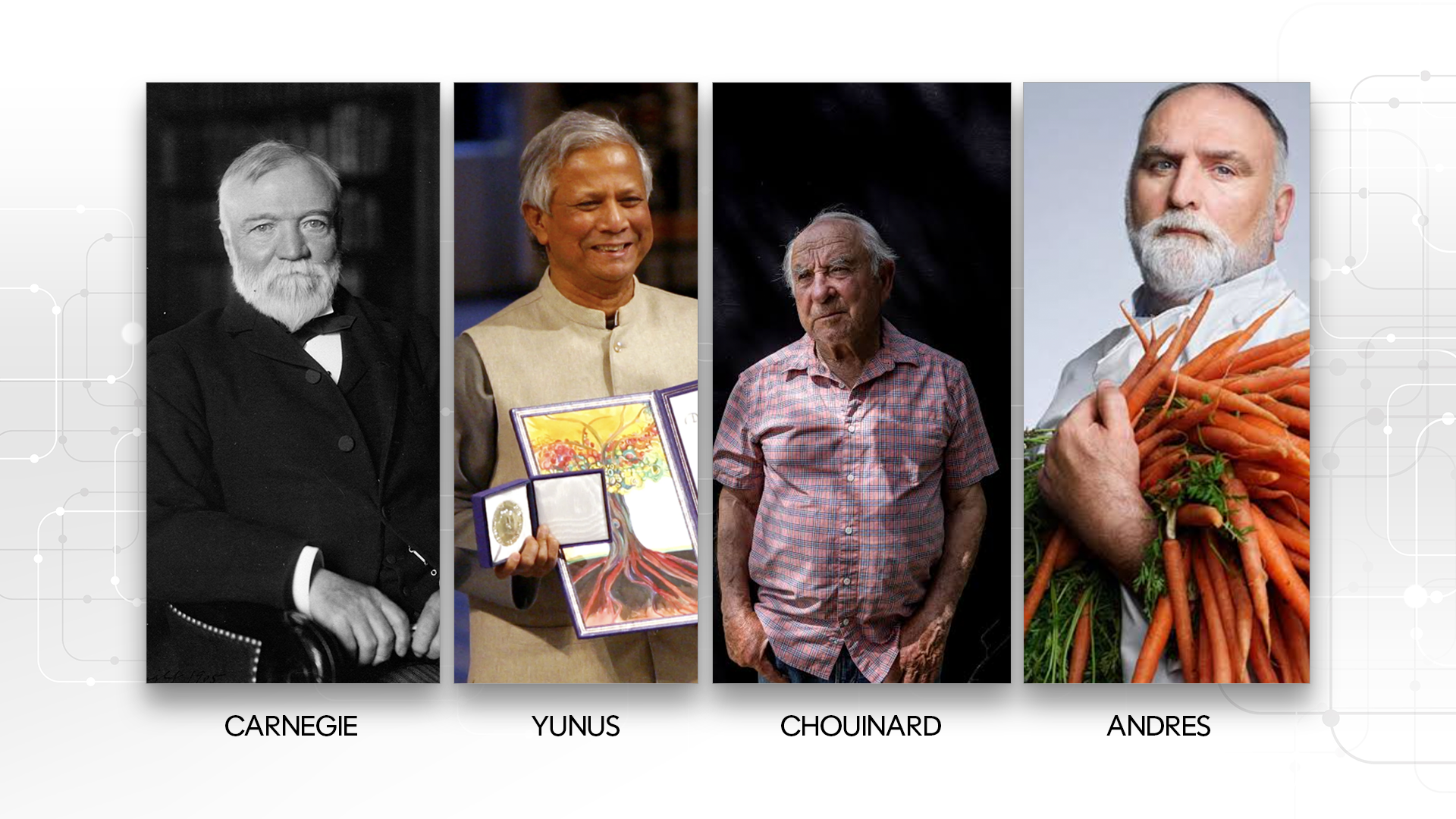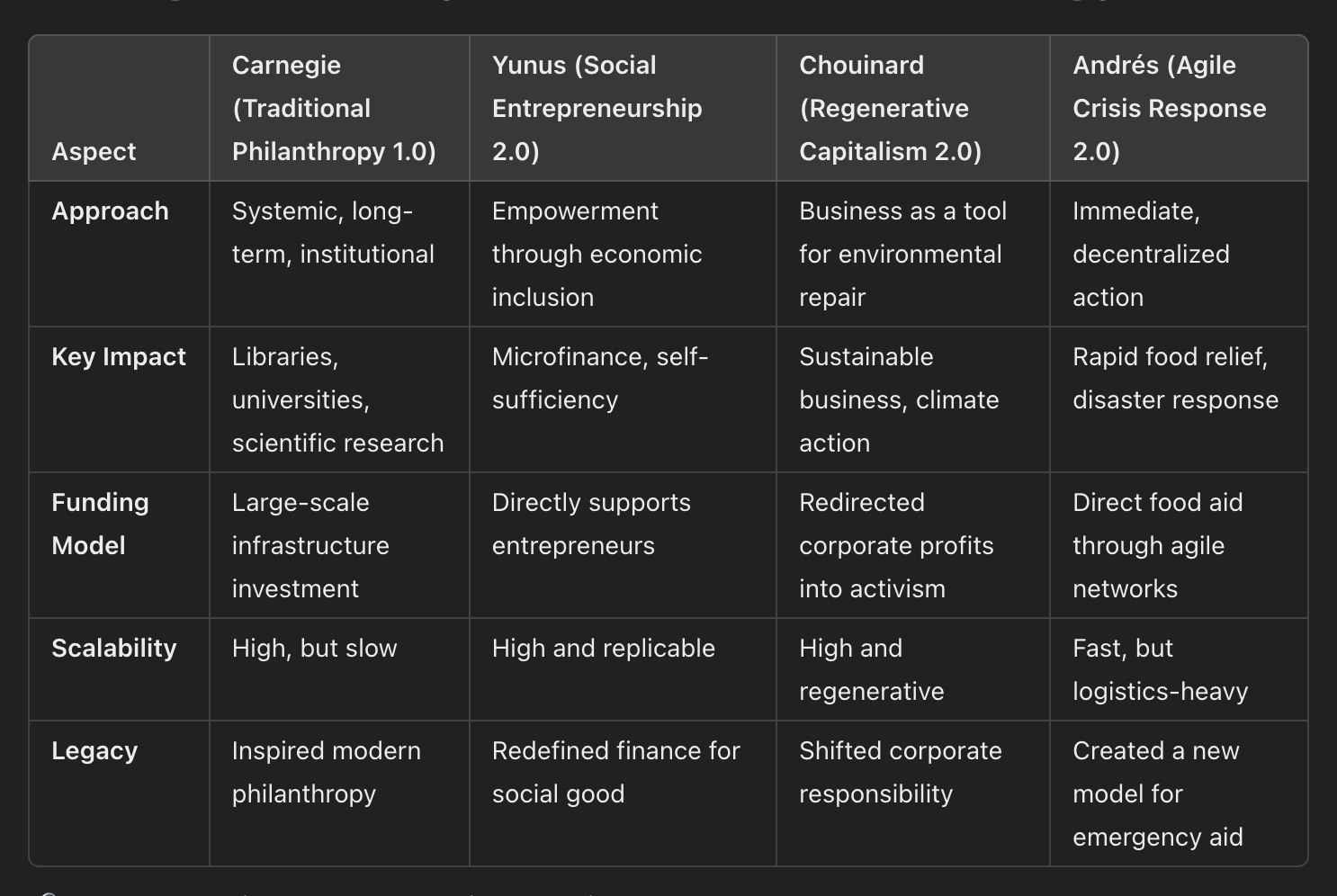WEEK 2 - The Evolution of Philanthropy
This image represents the evolution of philanthropy from traditional institutional giving to modern social entrepreneurship and regenerative impact models. Andrew Carnegie (left) symbolizes the Gilded Age model of philanthropy, focused on funding infrastructure like libraries and universities to provide long-term societal uplift. Muhammad Yunus (second from left) pioneered social entrepreneurship through microfinance, empowering underserved communities with sustainable financial independence. Yvon Chouinard (second from right) embodies regenerative capitalism, ensuring Patagonia’s profits serve environmental sustainability instead of shareholder wealth. José Andrés (right) represents agile crisis response philanthropy, revolutionizing humanitarian aid through World Central Kitchen, which rapidly mobilizes food relief in disaster zones. Together, they illustrate how philanthropy has evolved from top-down giving to systemic, entrepreneurial, and immediate-impact models that reshape the future of social change.
By studying these four figures, we gain a deeper understanding of how philanthropy can evolve to meet contemporary crises, bridging institutional change, economic empowerment, corporate activism, and rapid-response humanitarianism into a cohesive strategy for global impact.








Comparative Analysis: Four Models of Philanthropy



Questions & Assignment
✅ Discussion Questions
How do these four models reflect different eras of philanthropy?
Can businesses like Patagonia truly be regenerative, or are they still extractive?
Is fast philanthropy (e.g., disaster relief) sustainable long-term, or should more resources go toward prevention and systemic change?
What role does AI and technology play in the future of philanthropy?
✅ Assignments
Essay: Compare and contrast Carnegie’s philanthropy with either Yunus, Chouinard, or Andrés.

